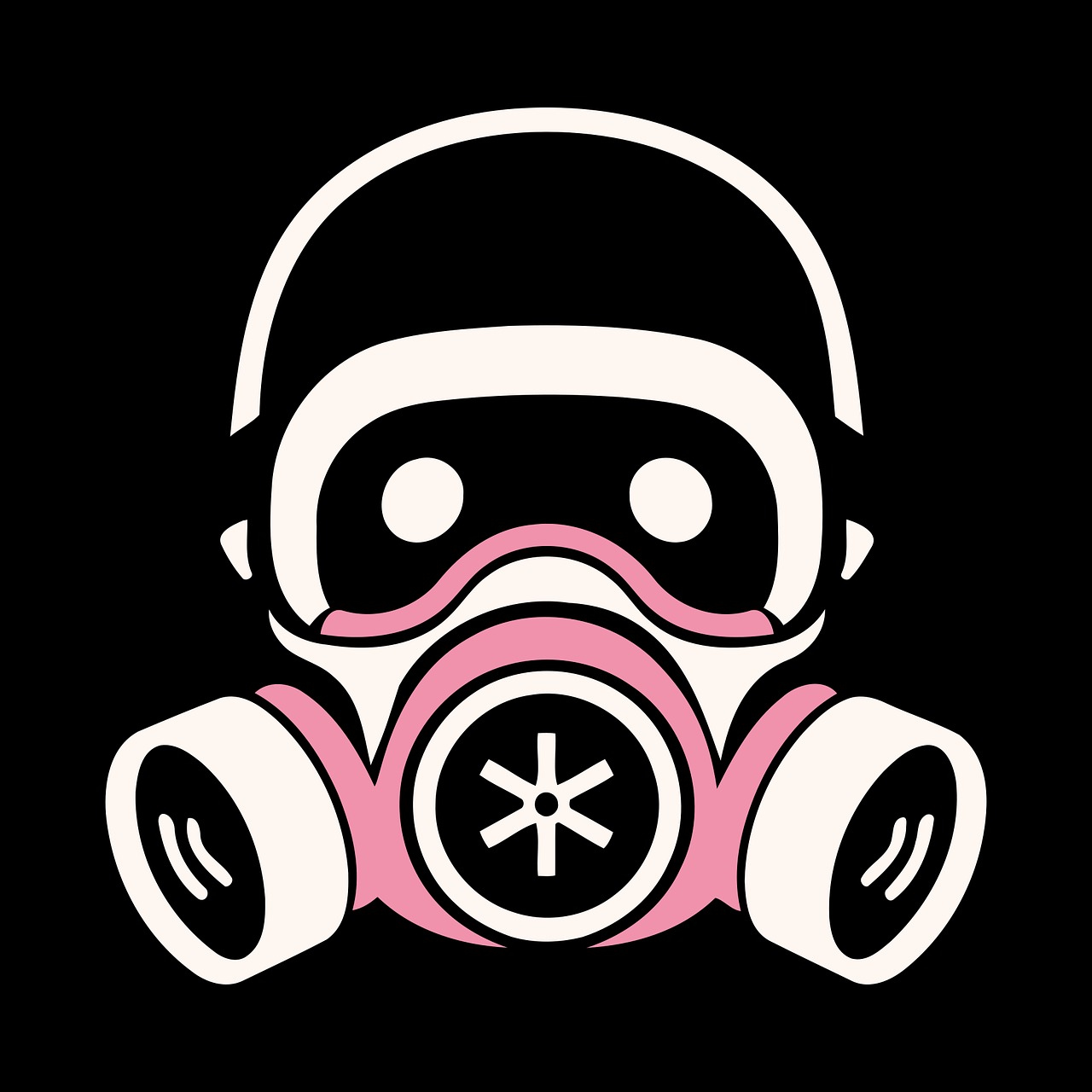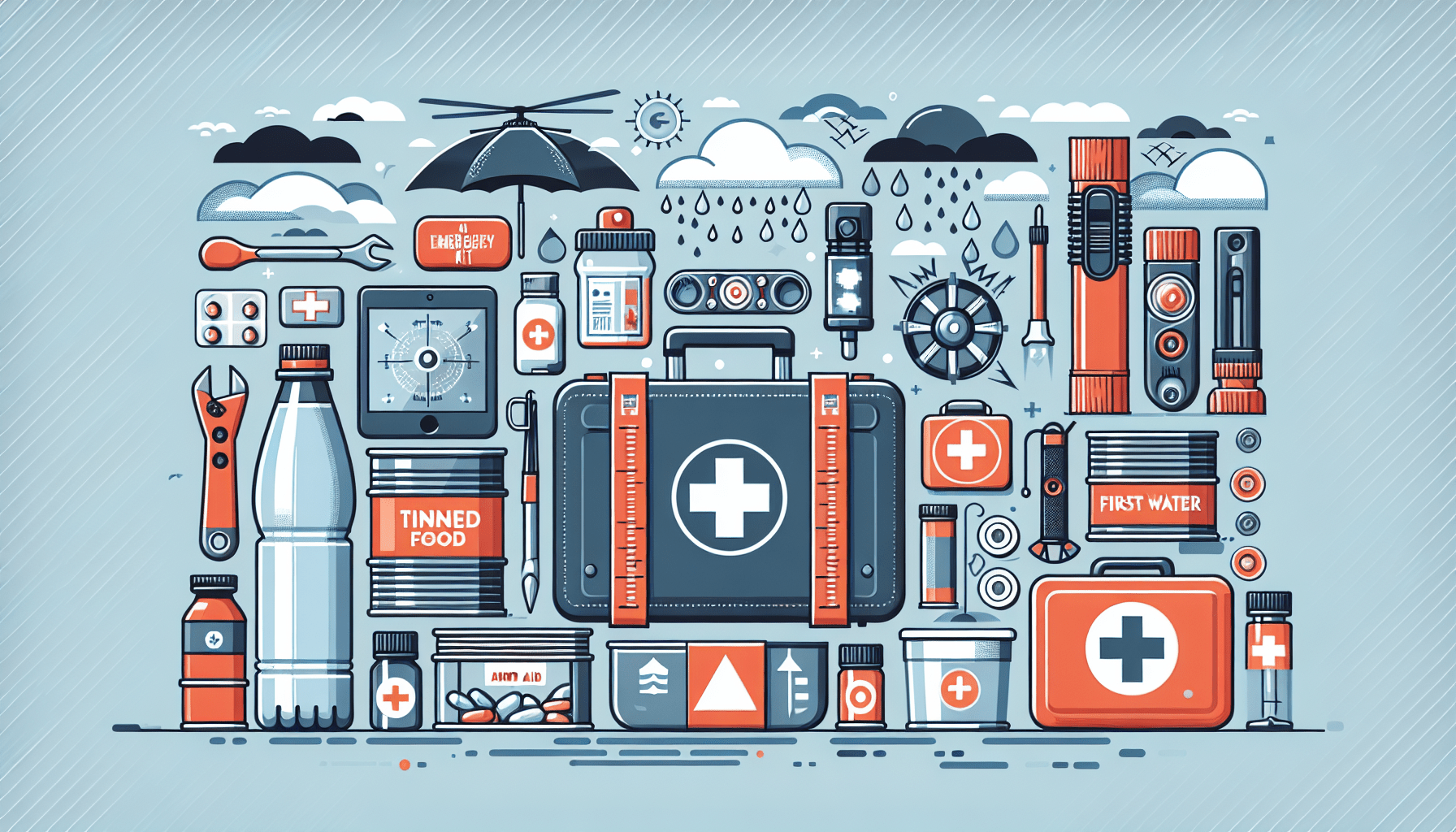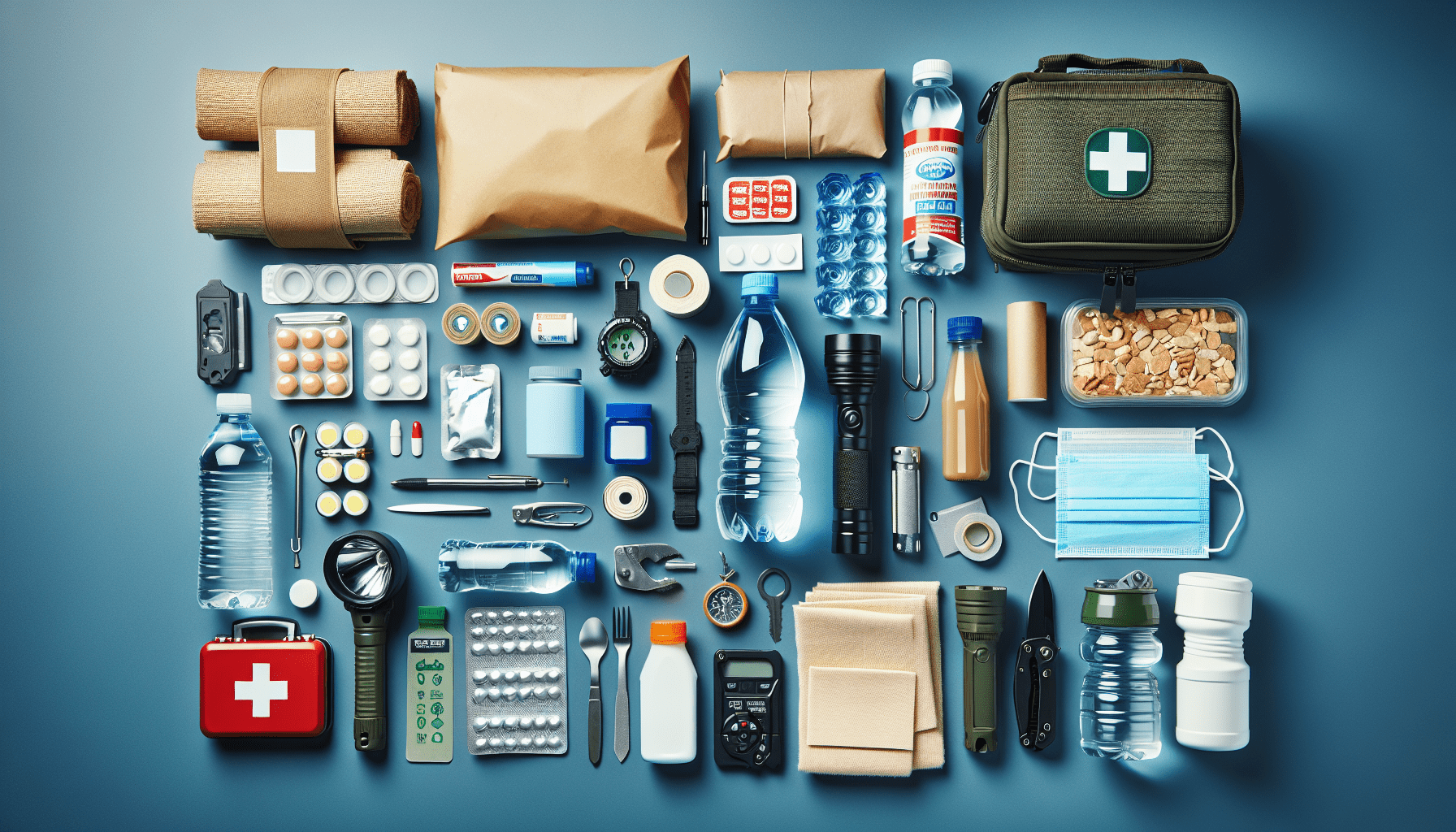Imagine being caught in a sudden natural disaster or other emergency situation. It’s a frightening thought, isn’t it? But don’t worry, because in this article, you’ll learn how to build an emergency preparedness kit that can help keep you and your loved ones safe during unexpected events. By following these simple steps and gathering essential items, you’ll have peace of mind knowing that you’re well-prepared for any potential emergency that comes your way.

Essential Supplies
When preparing for emergencies, it’s crucial to have the essential supplies on hand to ensure your safety and well-being. The following items should be included in your emergency preparedness kit:
Water
Having an adequate supply of clean drinking water is of utmost importance during emergencies. It is recommended to store at least one gallon of water per person per day for a minimum of three days. Ensure you have enough water for drinking, cooking, and personal hygiene needs.
Food
In times of crisis, having non-perishable food items readily available is vital. Aim to store a three-day supply of nutritious food that requires little to no preparation. Choose items with a long shelf life, such as canned goods, granola bars, and dried fruits. Don’t forget to include a manual can opener!
Medication
If you or anyone in your household relies on prescription medications, make sure to have an ample supply on hand. In addition, consider including over-the-counter medications for common ailments such as pain, fever, and allergies. Keep track of expiration dates and rotate your stock accordingly.
First aid kit
A well-stocked first aid kit is essential in any emergency preparedness kit. It should include bandages, adhesive tape, antiseptic wipes, pain relievers, antidiarrheal medication, tweezers, and scissors, among other items. Familiarize yourself with basic first aid techniques to be better prepared during emergencies.
Flashlight and batteries
During power outages, a reliable flashlight becomes your best friend. Make sure you have one for each member of your household and an ample supply of batteries. LED flashlights are preferred due to their longer battery life. Check the batteries regularly and replace as needed.
Extra clothes and blankets
In emergency situations, it’s essential to have extra clothes and blankets to help keep you warm, dry, and comfortable. Pack sturdy shoes, a warm jacket, socks, and extra layers suitable for the climate in your region. Additionally, include blankets or sleeping bags to provide insulation and protection from the elements.
Communication Tools
During emergencies, staying informed and being able to communicate with others is crucial. Here are some essential communication tools to include in your emergency preparedness kit:
Battery-operated radio
Having a battery-operated radio allows you to listen to important updates, news, and weather alerts. Look for a portable radio that can run on both batteries and alternate power sources. Stay tuned to local emergency or weather stations for vital information.
Whistle
A whistle is a simple yet effective tool to attract attention during emergencies. It can be used to signal for help if you find yourself in a dangerous situation or need assistance. Keep one within reach and teach family members how to use it properly.
Signal mirror
A signal mirror can be a lifesaver in situations where you need to communicate over longer distances. It reflects sunlight and can help rescuers locate your position. Familiarize yourself with the proper technique for using a signal mirror to maximize its effectiveness.
Portable charger
In today’s digital age, keeping your devices charged and operational is essential for communication. Invest in a portable charger that can power your cell phone, tablet, or other vital electronics. Opt for a charger with multiple USB ports and a high capacity battery.

Safety and Tools
Having the right tools can make a significant difference in your ability to handle emergencies safely. Consider including these items in your emergency preparedness kit:
Utility knife
A utility knife is a versatile tool that can be useful in various emergency situations. It can be used for cutting rope, opening packages, or even self-defense if necessary. Choose a sturdy, multi-purpose utility knife that fits comfortably in your hand.
Duct tape
Duct tape is a versatile item that can serve multiple purposes during emergencies. It can be used to repair broken items, secure tarps or plastic sheeting for shelter, or even treat minor wounds by creating makeshift bandages. Pack a roll of duct tape in your kit for its countless practical uses.
Multipurpose tool
A multipurpose tool, like a Swiss Army knife or a Leatherman, is a compact and convenient tool that combines various functions. These tools typically include pliers, screwdrivers, blades, and more. Having one in your emergency kit provides flexibility and prepares you for a wide range of scenarios.
Fire extinguisher
In the event of a fire, having a portable fire extinguisher can be crucial for your safety and the protection of your property. Ensure your fire extinguisher is fully charged and easily accessible. Familiarize yourself with its proper usage and the types of fires for which it is effective.
Personal Hygiene Items
Maintaining personal hygiene during emergencies is essential to prevent illness and maintain a sense of normalcy. Make sure to include these personal hygiene items in your emergency preparedness kit:
Toothbrush and toothpaste
Keeping your teeth and gums clean can help prevent dental issues during stressful times. Include travel-sized toothbrushes and toothpaste in your kit. Consider opting for extra dental supplies such as floss or mouthwash if you have space.
Soap and hand sanitizer
Proper hygiene practices, including handwashing, are crucial for preventing the spread of germs and infections. Pack antibacterial soap or liquid hand soap in your emergency preparedness kit. Additionally, include alcohol-based hand sanitizer for situations where water may not be readily available.
Feminine hygiene products
For individuals who menstruate, it’s important to include an adequate supply of feminine hygiene products in your emergency preparedness kit. Opt for tampons or pads that have a long shelf life and are individually wrapped for hygiene purposes.

Sanitation Supplies
Maintaining cleanliness and sanitation is vital during emergencies to prevent the spread of disease. Here are some important sanitation supplies to include in your emergency preparedness kit:
Toilet paper
Toilet paper is a necessity in any emergency preparedness kit. Pack an ample supply or a few rolls, ensuring it is stored in a waterproof container to protect it from moisture and pests.
Disposable garbage bags
Having a supply of sturdy disposable garbage bags allows you to properly dispose of waste and maintain cleanliness. They can also serve other purposes, such as waterproofing items or creating temporary shelters.
Bleach or disinfectant
Including bleach or a suitable disinfectant in your emergency preparedness kit helps sanitize surfaces and eliminate germs. It can be used to purify water in an emergency or to clean and disinfect utensils and surfaces.
Important Documents and Cash
Having essential documents and cash readily available is crucial during emergencies. Make sure to prepare and store the following items in a waterproof and portable container:
Identification documents
Include photocopies or digital scans of identification documents such as passports, driver’s licenses, birth certificates, and social security cards. These can be essential for identification purposes and accessing services or resources.
Insurance policies
Keep copies of your insurance policies, including health, home, and auto insurance, in your emergency preparedness kit. These documents will be invaluable for making claims or seeking assistance in the aftermath of a disaster.
Emergency contacts
Compile a list of emergency contacts, including family members, neighbors, friends, and local authorities. Include both phone numbers and email addresses. Also, consider including an out-of-state contact in case local communication is disrupted.
Cash
ATMs may not be accessible during emergencies or power outages, so having cash on hand is essential. Include a reasonable amount of small bills to cover immediate needs, such as purchasing supplies or paying for transportation.
Entertainment and Comfort
While emergencies can be stressful, having some items for entertainment and comfort can help alleviate anxiety. Consider including the following in your emergency preparedness kit:
Playing cards
Playing cards are a timeless source of entertainment that can provide hours of fun for individuals and families. They are lightweight, compact, and suitable for a wide range of games.
Books or magazines
Including a few books or magazines in your emergency kit can provide a welcome distraction and help pass the time. Choose materials that are uplifting, informative, or enjoyable to read.
Favorite snacks
Having your favorite snacks or comfort foods can help lift spirits amidst challenging circumstances. Consider including non-perishable snacks like granola bars, trail mix, or individually packaged treats.
Special Needs
It’s important to consider any special needs you or your household members may have when building your emergency preparedness kit. Here are some specific items to include:
Baby supplies
For households with infants or young children, include a sufficient supply of diapers, formula, baby food, and any necessary medications. Remember to rotate these items regularly to account for growth and changing needs.
Pet supplies
If you have pets, make sure to include essential supplies for their well-being. This may include food, water, medication, leashes, pet carriers, and identification tags. Consider creating a separate kit specifically for your pets.
Prescription medication
If you or anyone in your household requires prescription medication, ensure an adequate supply is included in your emergency preparedness kit. Check expiration dates regularly and refill as needed to avoid any interruptions in medication availability.
Glasses or contact lenses
If you wear glasses or contact lenses, having an extra pair or an up-to-date prescription can be crucial in an emergency. Include a spare pair of glasses or contacts and a set of contact lens solutions if applicable.
Emergency Shelter
In situations where you may need to leave your home or seek temporary shelter, having the necessary supplies is essential. Consider including these items in your emergency preparedness kit:
Tent or tarp
A lightweight and easy-to-assemble tent or tarp provides shelter from the elements when alternative housing is unavailable. Ensure your shelter can accommodate all members of your household comfortably.
Sleeping bags or mats
Sleeping bags or foam mats provide insulation and comfort when sleeping in temporary shelters or emergency accommodations. Choose options suitable for the climate in your region.
Portable stove and fuel
Having a portable stove and fuel on hand allows you to cook food and boil water, ensuring you can meet your basic needs. Choose a lightweight and compact stove specifically designed for camping or emergency use.
Additional Miscellaneous Items
Some additional items can prove invaluable during emergencies. Consider including the following in your emergency preparedness kit:
Extra set of car keys
In the event that your car keys are lost or damaged, having an extra set can prevent delays or complications in evacuation or transportation plans. Store the extra set in a secure and accessible location.
Local maps
Having maps of your local area can be vital during emergencies, especially if communication networks are down or access to digital maps is limited. Familiarize yourself with evacuation routes and alternative routes to essential services.
Rope or paracord
Rope or paracord is a versatile item that can be used for various purposes during emergencies, such as building shelters, securing items, or creating makeshift repairs. Choose a strong and durable option with a decent length.
Emergency cash in small bills
In addition to the cash mentioned earlier, it can be beneficial to include a separate stash of emergency cash in small bills. This can be handy for minor expenses or situations where exact change is needed, especially when ATMs or credit card systems may be offline.
By assembling an emergency preparedness kit with these essential supplies, communication tools, safety items, personal hygiene products, sanitation supplies, and additional miscellaneous items, you are taking important steps towards being prepared for unexpected situations. Remember to periodically check and refresh your kit to ensure everything is in working order and up-to-date. Being prepared can provide peace of mind and increase your ability to effectively navigate emergencies with confidence. Stay safe!
